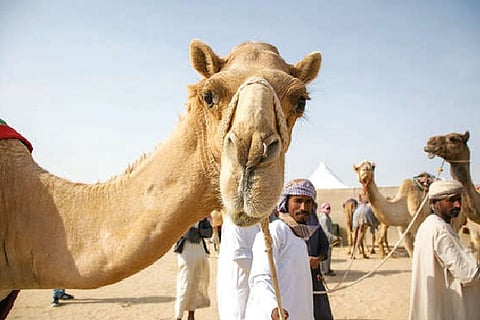

Chennai
Highlights of the gathering include Saluki races (the dogs are prized by the Bedouin because of their speed and eyesight), poetry readings and exhibitions on falconry and traditional artisanship. From fresh dates to camel milk, there’s also an array of food and drink. At the heart of the festival, however, are the camel beauty contests.
During the weekslong event, Al Dhafra is the epicenter of the camel universe. In 2019, the year I attended, more than 24,000 camels from all over the Middle East competed for 60 million Emirati dirham in prize money — the equivalent of more than $16 million. Vast sums of money also change hands as particularly beautiful camels are sold. Some participants trace the origins of the beauty contests to a family dispute in 1993, when two camel breeders had to call on some independent judges to determine whose animals were more beautiful. Since then, camel beauty contests have evolved into a multimillion-dollar industry, with state-sponsored heritage festivals held all across the country.
The aims of the Al Dhafra Festival, which was formally initiated by the government in 2008, are to celebrate Bedouin culture, generate tourism and preserve the purity of certain camel breeds. Bedouin society has all but vanished in the last fifty years. Modern borders have stifled nomadic herding patterns, and the encroachment of economic and technological change has upended other traditional cultural practices. For urbanised Bedouins, festivals like Al Dhafra are one of the few ways they can meaningfully sustain their traditions. Camel beauty competitions are divided into different categories, according to breed, age, sex and whether a camel is owned by a sheikh or a tribesman. The criteria, however, remain the same. The ideal camel has long straight legs, a long neck, a shapely hump (in just the right spot on its lower back), pert ears, expressive eyes framed by upward curled eyelashes, long droopy lips and, of course, a sleek coat and elegant posture.
No supermodel is complete without jewellery, and an entire industry has sprung up around the beauty pageants to provide the appropriate accoutrements. Camel tailors, for example, set up camp at Al Dhafra, where they sell colourful reins, shiny camel blankets laced with tinsel tassels and even glittering necklaces made of plastic beads and stringed coins.
Million Street, the road along which the camel superstars strut, transforms into an open-air market of tents, caravans and food trucks. The market isn’t simply a place to purchase camel tack and shampoo. Also on offer are colourful winter blankets, coffee serving sets, stoves, rugs, hunting gear, foldable chairs, waterskins and an assortment of clothing. Bright lights advertise restaurants that serve kebabs, cakes and sweet karak chai.
Emirati women play a limited role during the festival. Customarily excluded from participating in the camel competitions, women and children spend much of their time around their family tents or at a nearby market. As a foreigner, however, I seemed to be exempt from the gender restrictions and, during my three-day visit, was able to walk around freely, attend the camel beauty contests and join the owners at the winners’ celebrations.
Streitberger is a photojournalist based in London
The New York Times
Visit news.dtnext.in to explore our interactive epaper!
Download the DT Next app for more exciting features!
Click here for iOS
Click here for Android